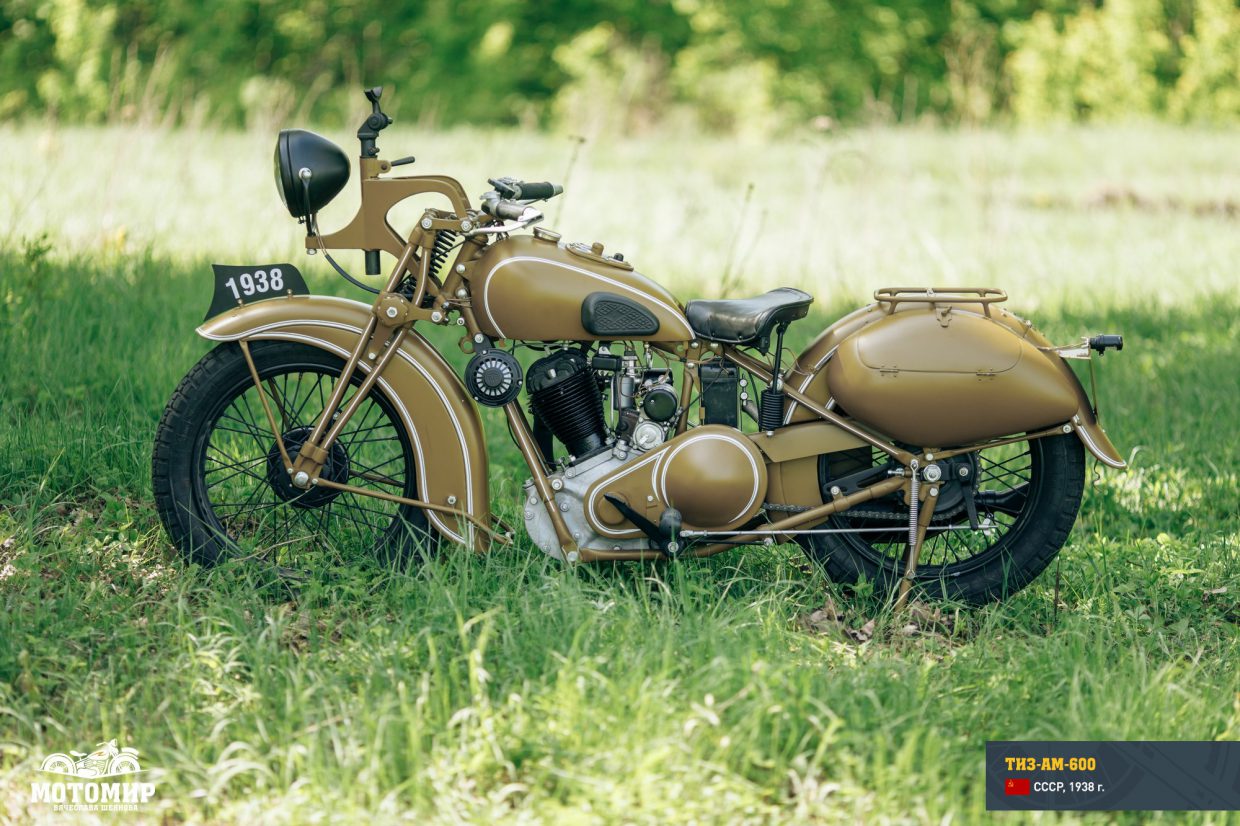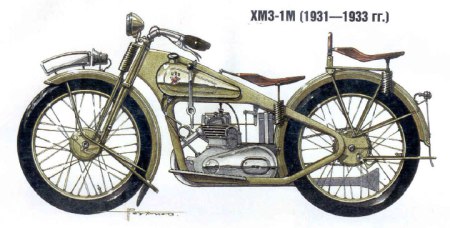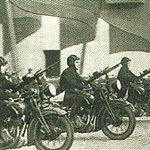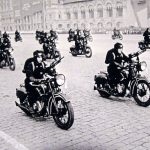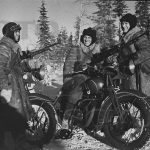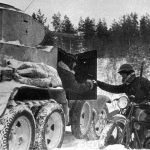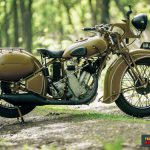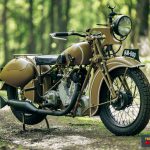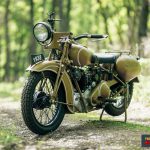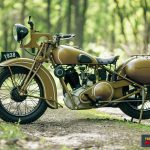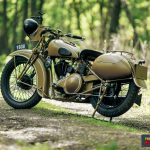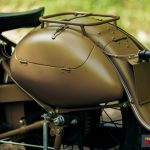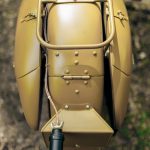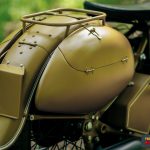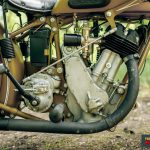This entry is also available in: Russian Chinese (Traditional)
Motorworld’s newspaper №87
Tracing its history to the missile production during the World War I on the basis of the evacuated Russo-Balt plant, Taganrog Instrumental Plant (TIZ) in 1934 was ordered to start motorcycle production under the direction of Naum A. Gutkin.
As motorcycle production was halted in 1934 in Kharkov and all of the KhMZ-1M documentation transferred to TIZ, specialists were sent to TIZ from other factories and they actively searched for new automotive and motorcycle major graduates.
Working out difficulties in establishing the new production, a series of a 350cc 6 hp KhMZ engine was produced, mainly for the use in stationary power plants, and sold through the local retail, but the 1M model didn’t start.
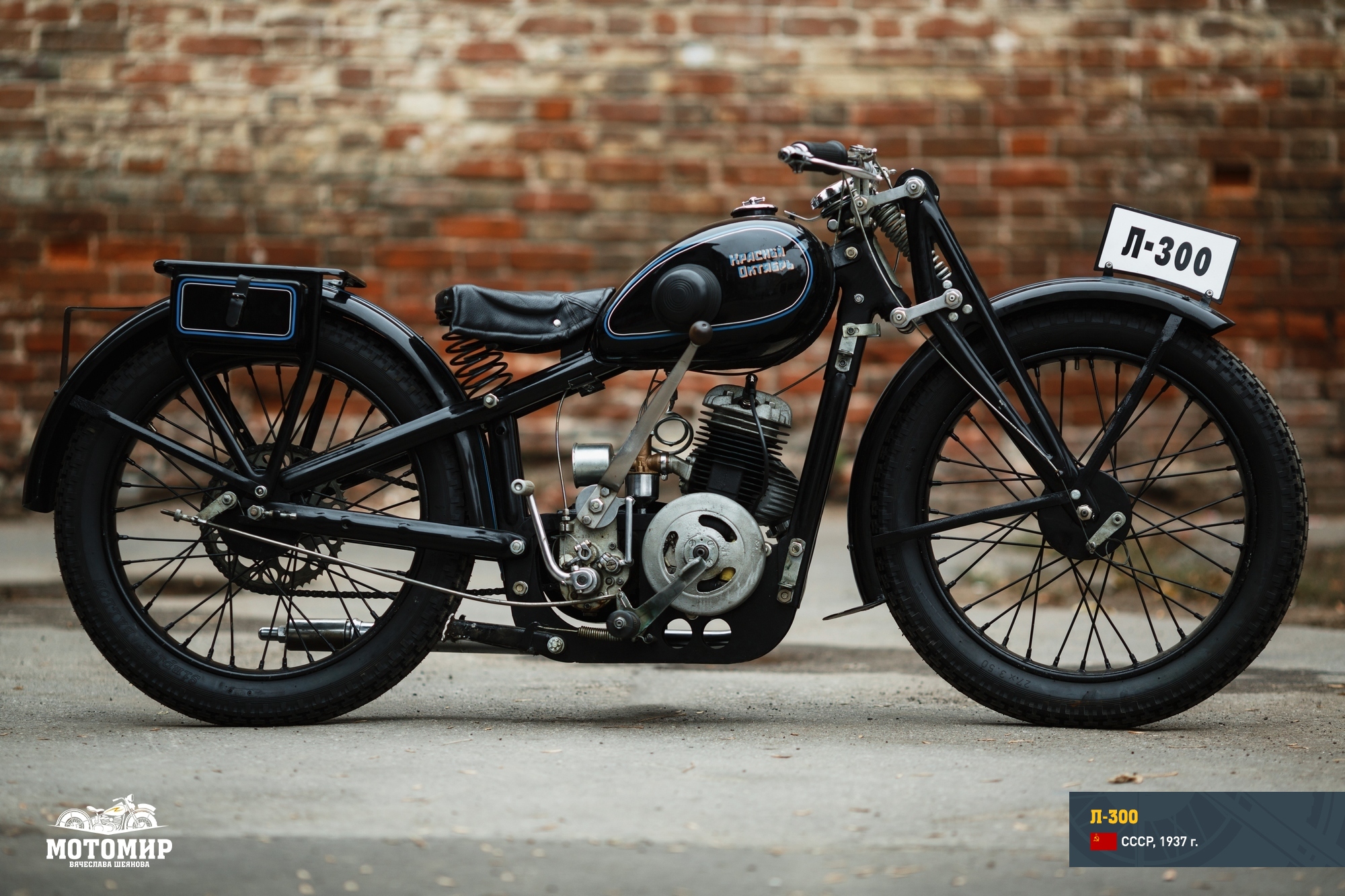
«Red October» L-300 from the collection «Motorworld by V.Sheynov»
KhMZ 1M did not satisfy its primary customer, the Red Army, which demanded reliable powerful motorcycles capable to pull a sidecar. The light motorcycles L-300 and Izh-7 were the only produced in the USSR, making it obvious that Army and economy needed a medium capacity (500-600cc) motorcycle. In 1932, initial plans to develop a motorcycle based on the British 500cc flathead BSA-500 were rejected by the Moscow plant as a risky experiment due to poor technological base.
Therefore, on March 20, 1935, S. Orjonikidze, the Heavy Industry Minister, ordered the Taganrog plant to design and launch production of a BSA-500 based new Soviet motorcycle. The output of 250 machines was planned for the end of the year, despite the fact that the three “master copy” BSA-500 were shipped from England only in April.
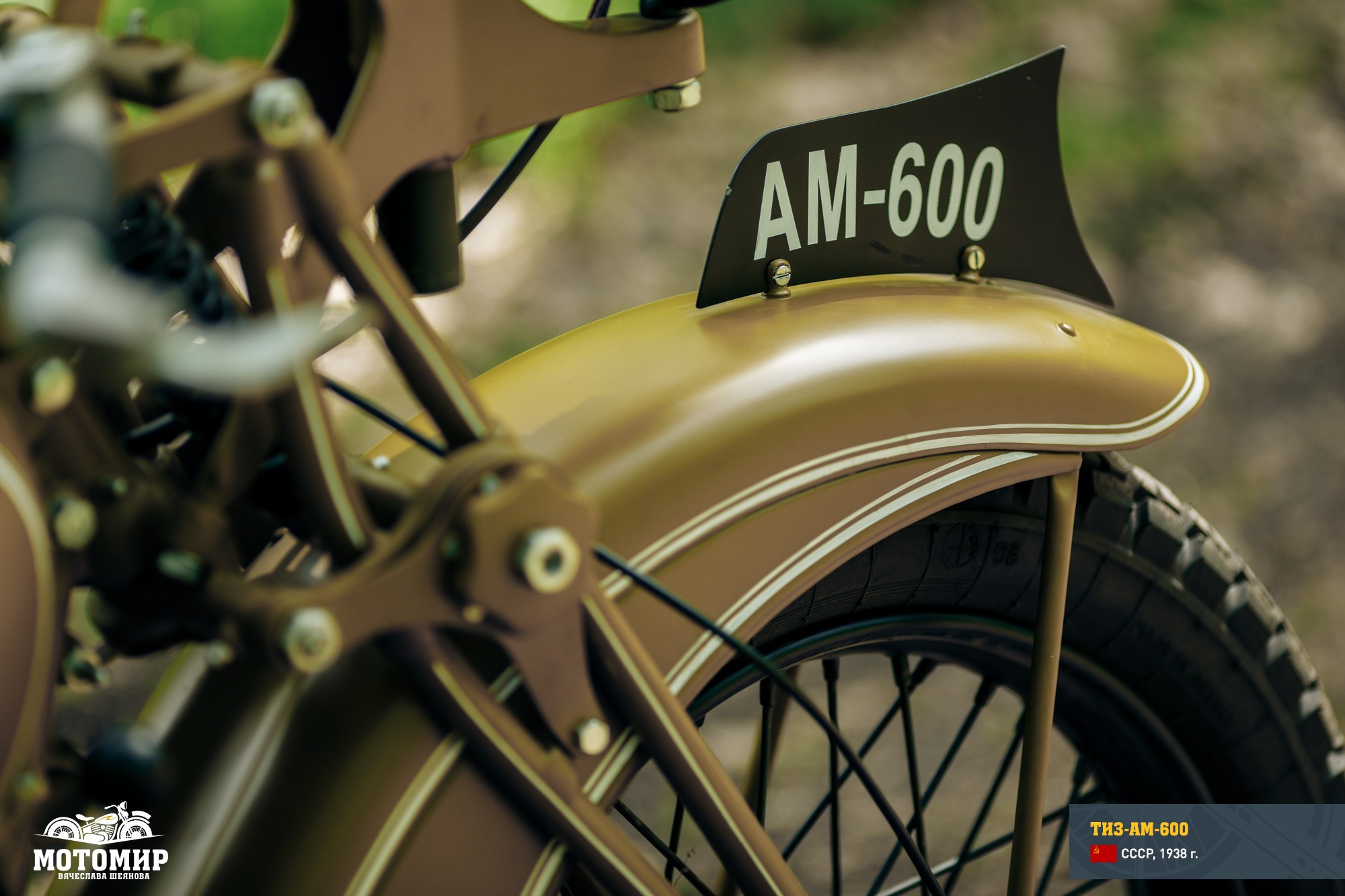
In the meanwhile, Mozharov’s student Jakob V. Koganov was appointed as the chief motorcycle engineer.
As the British specimen arrived in September 1935, the chief engineer’s office decided to develop an adaptation to local conditions, making a new design of the frame, front fork and wheel, and converting from inch to metric system. In very short period of time (before December 31, 1935) the Design Bureau has released all working drawings, specifications for the production of complex parts and assembly of units. The Technology Bureau issued all necessary documentation, planned and organized the assembly of the experimental batch. The new machine was named AM-600 (“A” stands for the first model, “M” stands for motorcycle, “600” stands for the engine displacement).
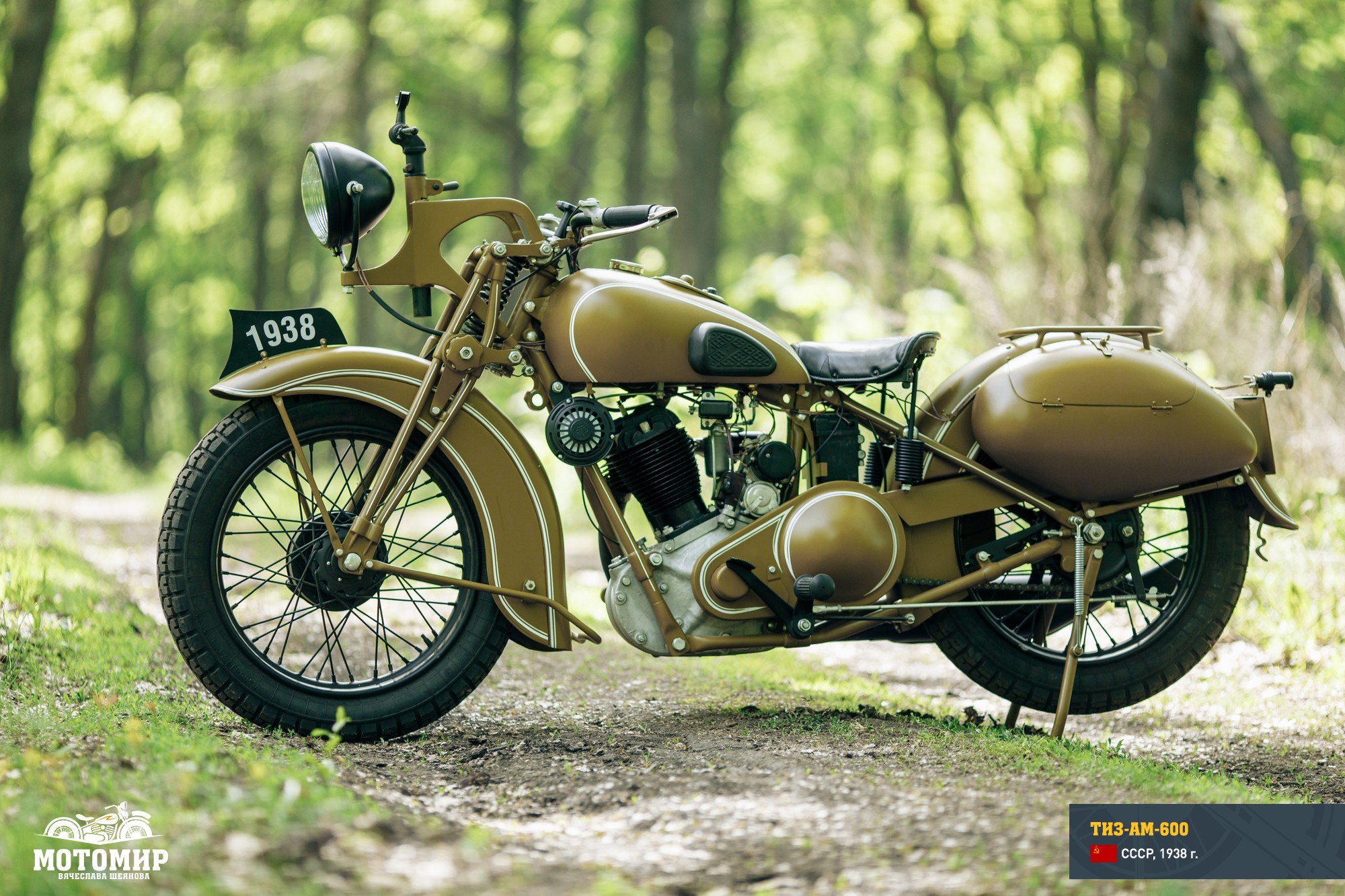
In four months, five prototypes were built, and then demonstrated on the Labor Day parade. Then factory tested and presented Am-600 to the State Commission in Moscow on May 27. On the same day, Minister Orjonikidze issued an order to meet all plant’s demands to make a production run of AM-600 possible this year. In just a few months, by October 1936, the first run of 200 machines rolled out from TIZ. At the same time, TIZ designers developed the sidecar.
The frame – separable tubular, with main parts forged. The fork – tubular parallelogram with single barrel-type spring. Engine – 595cc single cylinder, 4-stroke flathead, 16.5 hp at 3,800 RPM. Later models were 18 hp. Gearbox – 4-speed, separate, driven by the engine and driving the rear wheel with roller chains.
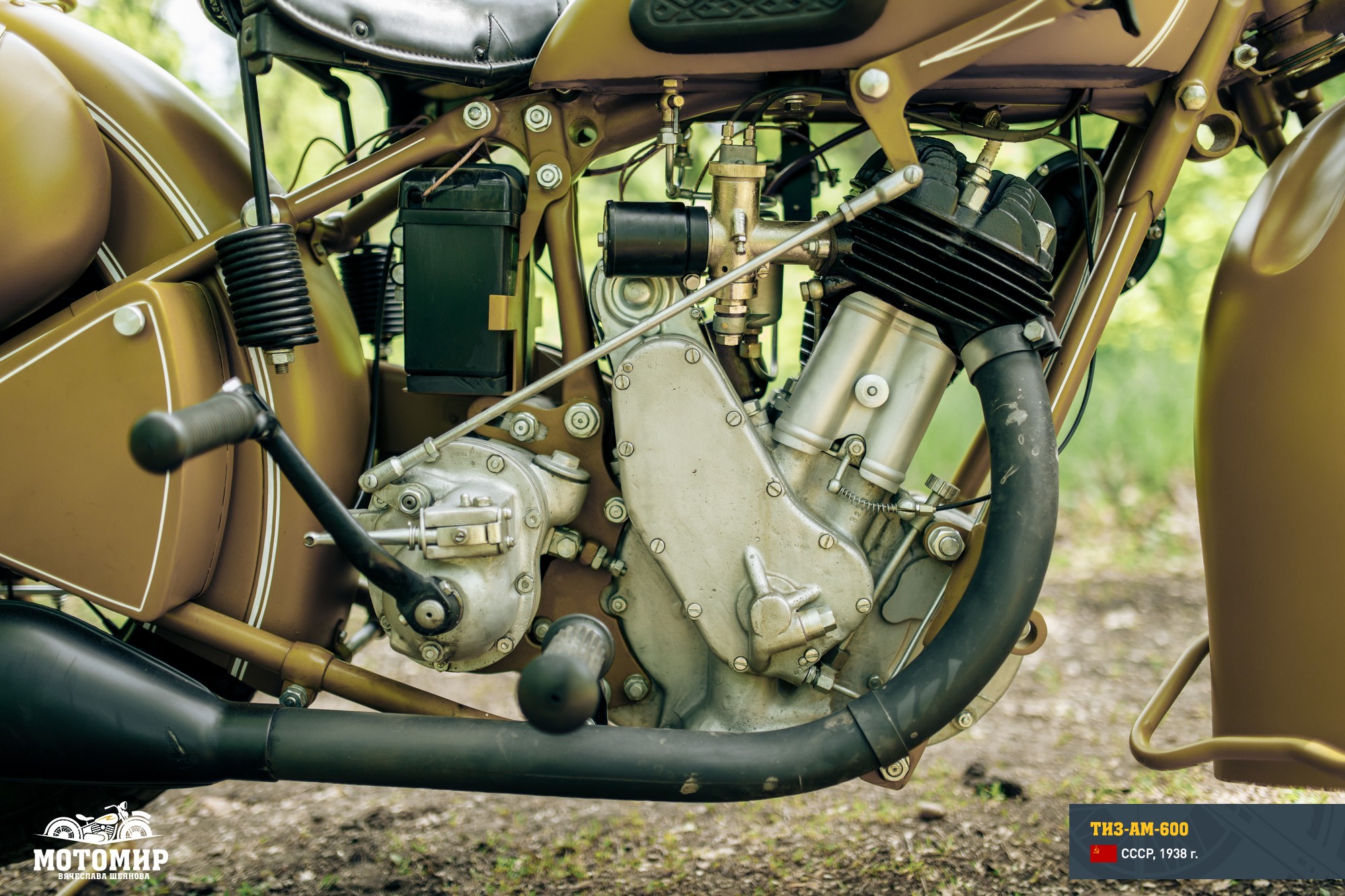
The solo motorcycle’s dry weight was 185 kg. The top speed was 95 km/h. Being of an overall good design, the machine had no serious complaints, but rather appreciation from the Armored Vehicles Administration of Red Army.
Constantly undergoing improvements, AM-600 tried numerous variants of parts, it is a pain even today for historic motorcycle enthusiast, as changes were often not published in catalogs.
Just a few examples: two types of cylinder heads – cast and aluminium; three types of the engine carter; four types of the timing mechanism cap; three types of fenders; two sets of electricals.
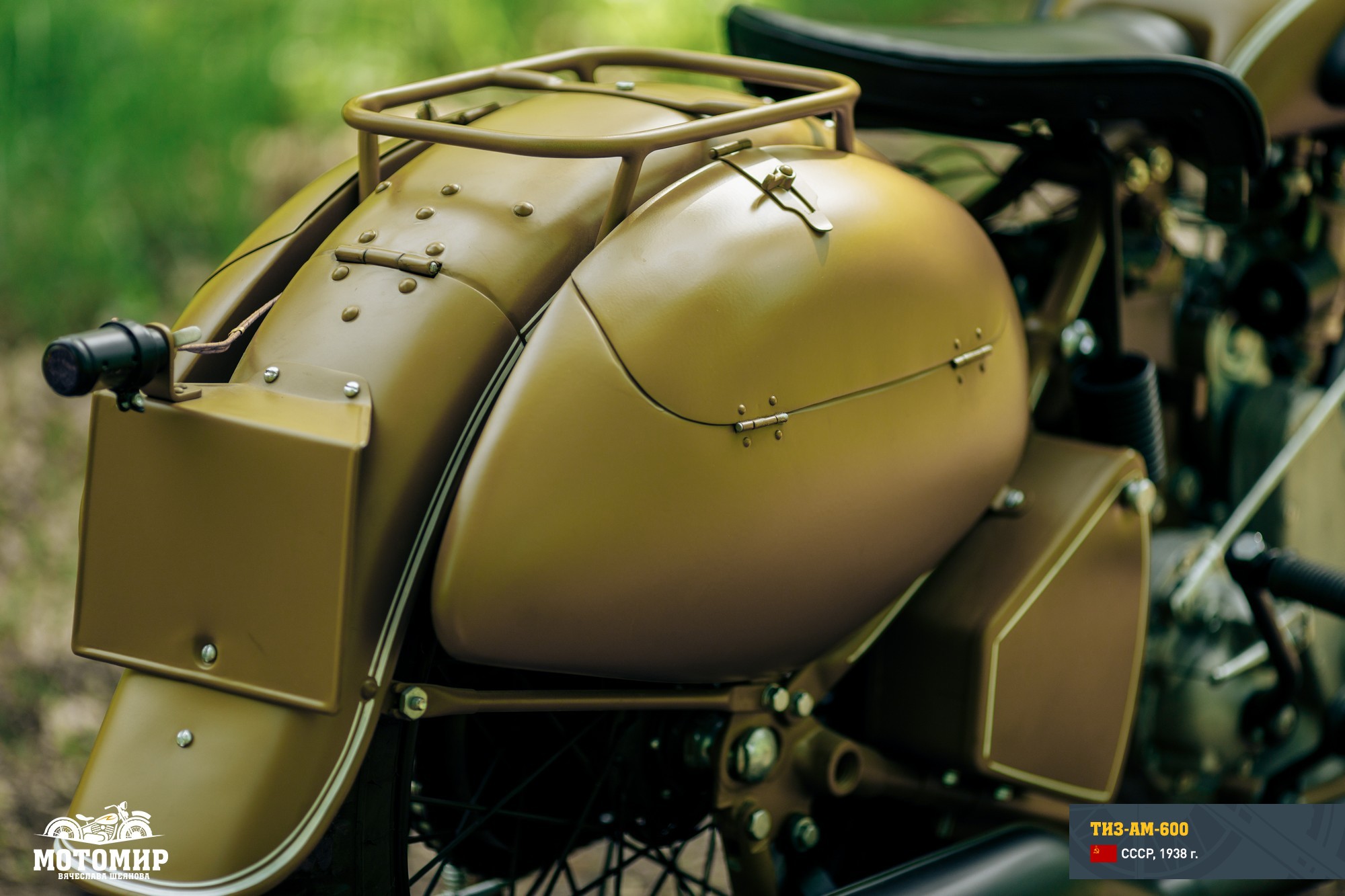
In addition, a major redesign was planned for TIZ AM-600 to make an electricals interchangeable with Izh-9/12 and L-8, a larger gas tank, a stronger 18 hp engine and other changes, but that was considered expensive and dropped, with just slight changes made to the regular AM-600.
Popular in Red Army, this model fought in the Finnish and in the Great War against Germany with sidecars equipped with a hinge-mounted machine gun, taking part in military parades on the Red Square from 1937, with a special series of solo motorcyсles with machine guns on the steering bars produced just for parades.
After the war-forced production termination in Taganrog the plant was evacuated to Tumen where TIZ-AM-600 production for Red Army was quickly back from the stock of parts despite enormous hardships, and continued in the evacuation until the mid-1943.
Based on the book «The History of Soviet Motorcycles» by A. A. Mityaev (Мятиев А.А. – «Иcтория советского мотоцикла»).
| Manufacturer | Taganrog Instrumental Plant (TIZ) |
| Years of manufacture | 1935-1943 |
| Quantity produced, units | |
| Price | |
| Today’s value |
| ENGINE AND TRANSMISSION | |
| Type | Single cylinder, 4-stroke flathead |
| Engine capacity, cc | 595 |
| Bore and stroke, mm | 63 х 80 / 2.48″ X 3.15″ |
| Engine rating | 16 hp at 3800 rpm |
| Sparking | |
| Carburetor | |
| Battery | |
| Clutch | |
| Transmission | 4-speed |
| FRAME AND WHEELBASE | |
| Frame type | Separable tubular, with loaded parts forged |
| Front suspension | Tubular parallelogram with single barrel-type spring |
| Rear suspension | Rigid |
| Brakes | Drum type, on all wheels |
| Wheel size | 4.00 х 19 |
| DIMENSIONS | |
| Length, mm | 2 170 |
| Width, mm | 830 |
| Height, mm | 970 |
| Wheelbase, mm | 1 420 |
| Ground clearance, mm | 125 |
| Seat height, mm | 700 |
| Mass, kg |
185
|
| Gas tank size, l |
17
|
| Maximum speed, km/h |
95
|
| Range, km | 280 |





